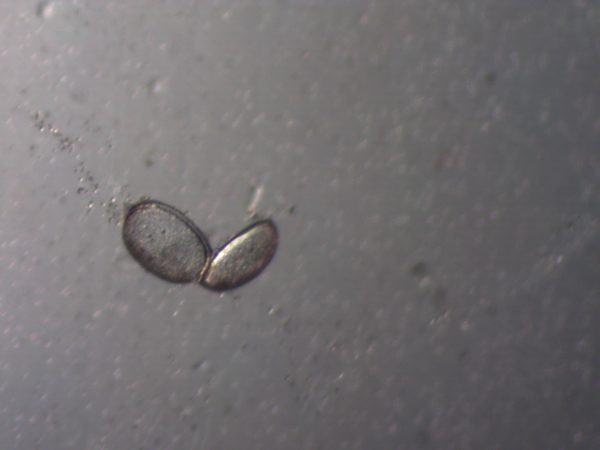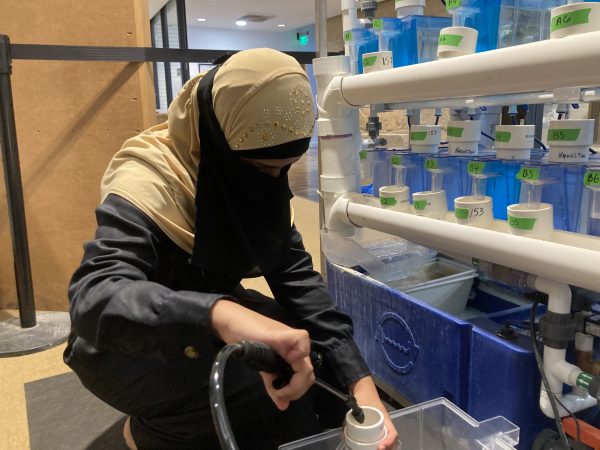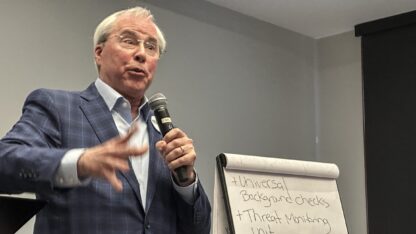Researchers Study The Early Lives Of Tiny Mussels, Riding Around On Fish
Here’s something Georgians can be proud of: Georgia and its neighboring states are exploding with freshwater biodiversity.
Few places in the world rival the number of fish, crayfish and mussel species that live in the rivers and streams of Georgia, Tennessee and Alabama. Many of those species only live in the rivers here, and nowhere else on the planet.
Mussels — which if people think about them much at all, it’s probably to think about them steamed and served on a plate — are important to the health of rivers. As filter feeders, they suck up algae and bacteria in the water.
But many mussel species are at risk, facing the same threats that other freshwater creatures encounter: pollution, degraded habitat and the damage that dams can do.
So researchers are studying mussels’ early lives, when they’re tiny, and riding around on fish. Scientists at the University of Georgia, working with Albany State University, the Flint RiverQuarium in Albany and the Georgia Department of Natural Resources, are hoping to figure out what species of mussels hitch themselves to which species of fish in Georgia’s Flint River.

“There are a lot of things you can parse out,” said Hayley Robinson, a graduate student at UGA’s Warnell School of Forestry and Natural Resources.
In their microscopic larval stage, mussels attach themselves to a fish’s fins or gills. Some mussels might be more specialized, only using certain kinds of fish. Some mussels may be affected by dams that limit access to their host fish.
In the Flint River, scientists know the mussel-fish relationship for about 40% of the species, said Pete Hazelton, a fish and freshwater mussel population ecologist and conservation biologist at UGA.
“Host relationships are really important for conservation reasons,” he said. “Throughout the rest of the country, folks are propagating and restoring mussel populations by raising them in hatcheries.”
But without knowing the host fish for those hatchery mussels, it can be difficult to successfully grow and reintroduce them, he said.
It’s also difficult just to identify mussels when they’re young.
They’re microscopic, but even a microscope can’t get experts to a definite species ID. So the tiny mussels in this project get sent out for genetic analysis.
“It’s just like scanning a box of Cheerios,” said John Wares, who specializes in molecular ecology at UGA’s Odum School of Ecology. “We have a relatively automatic way of knowing what it is.”
The Flint River mussel project brings in Albany State undergrads to collect the mussels.

Fareeha Mohammad, who hopes to pursue a career in dentistry, said she signed up to help because she’s interested in nature, and she sees how the hand-eye coordination she’s using to handle the tiny mussels could also be helpful in dental research.
Mohammad said even though she grew up in Albany, she’d never thought much about what was in the Flint River, which flows through town and near her school.
“I’ve never thought about mussels before this project,” she said.
Same for Daisha Yancey, a biology major from the Atlanta area, who’s hoping to be an ER physician.
“This gives me a huge perspective on the Flint as well as different rivers throughout Georgia,” she said.
The students helped catch fish in the Flint. Now, they monitor those fish in tanks at the Flint RiverQuarium in downtown Albany. When the mussels drop off the fish into the water, the tanks’ filters suck them up and the students can then collect them.
Yancey, examining a mussel under a microscope, said it looked like two hamburger buns “with a patty sticking out, honestly.”
The Albany State students do their work in the open at the aquarium, which gets to another element of the project: public outreach.
“We’re making it accessible to the general public so that they can learn,” Hazelton said. He said people might not realize there are freshwater mussels in the Flint River or other Georgia rivers, “and this is a hotbed of biodiversity.”
Yancey says one little girl wanted a picture taken with her.
“Some people are like, ‘Oh, my gosh, you’re scientists,’” she said.
So this project, in addition to being about learning more about young mussels, is also about inspiring young people to care about them.








